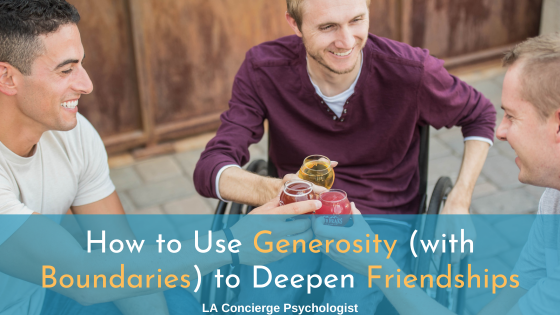Attention Deficit/Hyperactivity Disorder (ADHD) is improperly named. ADHD-ers aren’t lacking in attention. Rather, they struggle in directing their attention at will. Their attention goes in all directions, often independent of a person’s desires.
Science is still working on the particulars of why this happens, but one theory is the behavior of a neural network called the Default Mode Network (DMN). When we’re awake, our brains constantly process information. This happens both consciously and subconsciously. The DMN activates when we’re not focused on a specific task. In some cases, people with ADHD have trouble focusing their attention on tasks because their DMN is overactive compared to people without ADHD. It doesn’t subside when it’s supposed to, so one part of the brain is always wandering and exploring larger and more internal issues.
This article explores how the DMN influences a person’s ability to stay focused on tasks and how someone can use grounding techniques to calm their thoughts when they start spinning out of their control.
What Is The Default Mode Network?
The Default Mode Network (DMN) is a group of interconnected brain regions that are active when you are awake, at rest, and not engaged in a specific task. This neural network includes the posterior cingulate cortex (PCC), medial prefrontal cortex (mPFC), inferior parietal lobule (IPL), lateral temporal cortex (LTC), middle temporal gyrus/angular gyrus (MTG/ATG) and superior frontal gyrus/rostral anterior cingulate cortex (ACC). Try not to be overwhelmed by the biology! Just know that this is the part of your brain involved in your concept of self and your relation to others.
The DMN is involved in daydreaming, thinking about yourself or your feelings, remembering past events, and imagining future ones. It plays an important role in self-awareness and introspection since these processes involve self-referential thinking— processing information about yourself rather than other people or objects. The DMN also helps us monitor our surroundings for changes and novel stimuli so we can respond appropriately to them. When you’re at rest and your focus is more internal, your DMN directs those thoughts and keeps a general watch over your environment.
The DMN and ADHD
There’s been a lot of research on how the DMN contributes to various mental health challenges, and much of that has focused on how it connects and contributes to the ADHD neurotype. Back in 2007, it was first proposed that ADHD may be caused by an imbalance between two very different neural networks: the active but resting DMN and the fixed and focused Task Positive Network (TPN).
The Task Positive Network
The Task Positive Network (TPN) is the neural network that activates when you start engaging in a task that requires cognitive focus and short-term memory. Your thoughts divert from your internal experiences and you give your attention to the task at hand. For people with neurotypical brains, the DMN fades into the background when the TPN activates. Their minds stop wandering, and their attention stays fixed when they start focusing on a task.
Some researchers have proposed that one of the reasons people with ADHD struggle is because their DMN doesn’t go offline when their TPN kicks in. Your TPN kicks in to help you accomplish a task, but your DMN is still thinking about the interactions you had this morning, how you fit into your friend group, what that thing you read last week was about, or whether you upset your family on that vacation a few years ago.
Neurotypical people can take their DMN offline when they need to focus most of the time. But people with ADHD frequently have both neural networks running at the same time, and it can make it challenging to stay focused on one task because their brains are still questing under the influence of the DMN.
Engaging Your TPN
Having two systems online all the time doesn’t have to be a bad thing. This might be one of the reasons so many people with ADHD are able to be incredibly creative and think of out-of-the-box solutions. Thinking from this view can provide a lot of insight and can be a fantastic tool.
While it can be a gift, there’s also no denying that it makes everyday tasks more difficult. Since it’s part of the ADHD neurotype, it’s not something you can dispose of entirely. The trick is to try to up the function of the TPN, so it has more control over the focus.
One way to do this is by engaging with the body while also engaging your focus. This can help you prioritize your TPN. Focusing on your breathing, especially in a pattern that requires you to count or keep a beat, can induce that focus without requiring you to undertake a difficult task before you’re ready. Meditation, mindfulness activities, and other types of grounding exercises can also be effective tools for transition.
Four Ways to Engage Your TPN
We’ve written about grounding exercises and mindfulness before, but here are a few quick tips for grounding yourself to engage your TPN:
- Breathing exercises. These help you relax and focus. You can do them anywhere, anytime. Try breathing in for four, holding for holding, then breathing out for six. It doesn’t have to be those exact numbers– pick any numbers that feel comfortable for you.
- Meditation exercises. This can make it easier to destress, sleep better, and cope with anxiety. Start somewhere—even if it’s only for five minutes a day at first.
- Grounding exercises. Engaging your physical senses is a great way to bring yourself back into the present when you feel overwhelmed by anxiety or stress. You can do them anywhere at any time. Some examples include tapping different points on your body or identifying five things around you that you can see, hear, taste, smell, or touch
- Physical exercise. This can reduce stress levels by releasing endorphins in the brain! It also can help deal with depression by increasing blood flow throughout the body which can improve mood.
Professional Support for ADHD
The DMN isn’t a bad thing. It provides insight and deep introspection. The trouble comes when it causes people to ruminate on their anxious thoughts or lose lots of time to their wandering mind. Learning how to better engage your TPN can help reduce these difficulties. And grounding exercises can help.
Considering working with an adult ADHD specialist who uses a neurodivergent-affirming approach to work with the ADHD neurotype. Send us a message to see how we can help or book a free 20 minute consultation call with Dr. Barajas or Dr. Goldman.



